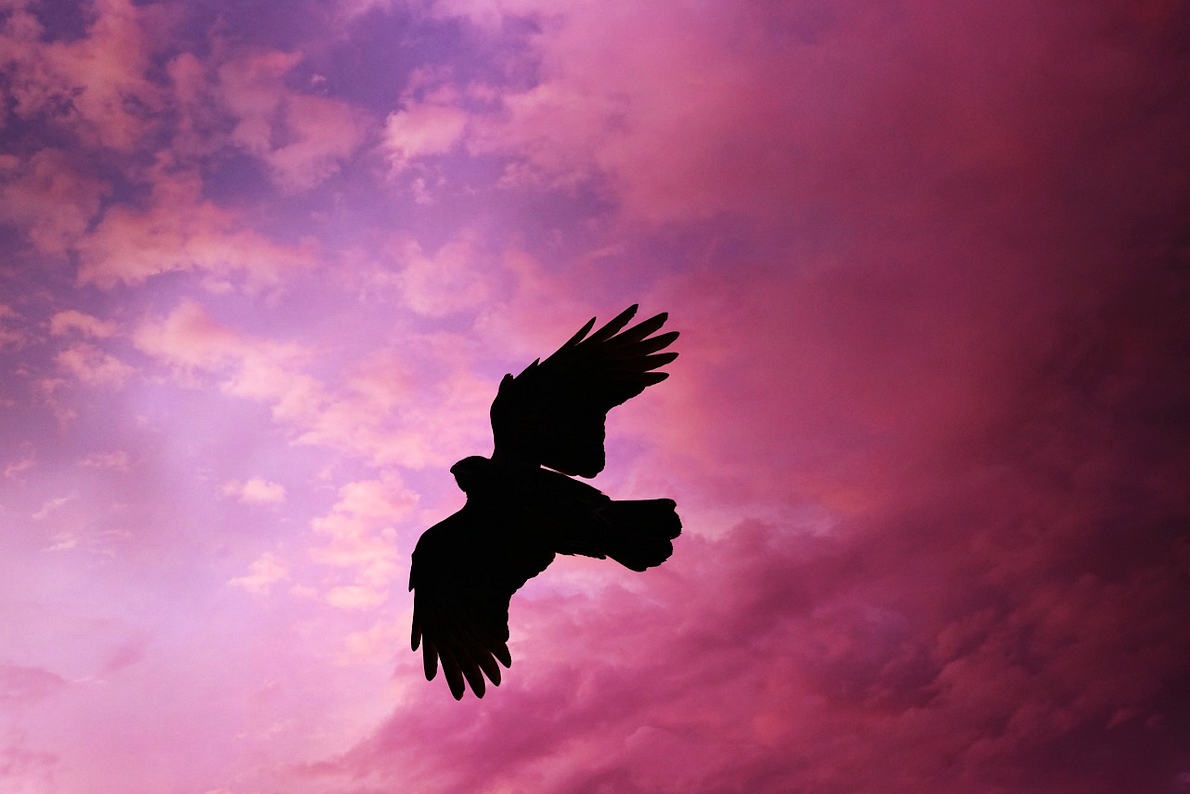Franz Kafka’s aphorisms still speak to the reality in which we live. One observation, which ostensibly targets our playful, adamant cousins, the crows, strikes a disturbing note for our present time:
“The crows maintain that a single crow can destroy the heavens. But that says nothing against the heavens, for the heavens signify simply: the impossibility of crows.â€
If crows were actually disbarred from heaven for their free-wheeling, self-proclaiming presence in this world, then I wouldn’t rate my own chances, of ever being invited into heaven, very highly. And, since this world may already be a heavenly realm whose true nature we simply can’t see, then crows (or, in New Mexico, ravens) belong here every bit as much as I do. My eyes are drawn upwards, wrenched free from my pedestrian progress down the sidewalk, by the graceful arc of a hundred ravens, wheeling across the sky. And settling in the treetops for their nightfall assemblies and their gradually subsiding pajama talk, I find myself remembering the openness of this sacred world.
The willingness of Kafka’s crows to destroy heaven is, of course, really our history. It is humanity that is willing to destroy our world for all the beings who live here.
After being forewarned—most dramatically in recent decades—that human behavior is inflicting irreparable damage, we have now passed the tipping point. The icecaps will now not remain in place for another thousand centuries; they are already melting and slipping off their shelves in massive pieces as water collects at their base like oil on the bottom of a baking pan. We now have at most a few more centuries, perhaps only decades, before the sea, swollen with water that has been held in place for thousands of centuries, will swamp communities around the globe. Considering that human behavior has brought this fate upon us, why aren’t we boasting that a single species can destroy the heavens, and that we are that species? We have turned our backs on all beings who have nowhere else to live, including all our cousins who haven’t meddled with the Creation.
Do we lack the sincerity to openly acknowledge the criminal intent of our behavior? Why aren’t we adding to our resumes that we are deeply committed to destroying the heavens? Are we secretly ashamed that our own ignorance and fear lies at the root of the pain that we see blooming like algae across the face of the globe?
In Buddhism, which doesn’t talk about sin, but about ignorance, greed and hatred, the closest equivalent to heaven and hell is nirvana and samsara. But Nirvana is not a place we will reach after a life well-lived here. It is a state of consciousness that is present here and now, and we have only to notice it. But, if we don’t notice it, then we will continue to take ourselves and others down beneath the waves of the oceanic suffering of samsara. It is not Kafka’s crows that are doing this. Human beings are doing it.
But despair never solves anything. Nor does self-contempt. We just need to wheel into the open space of our minds and hearts, where hope still stirs in our weary eyes. Even though damage to our world has been accumulating for a long time, and in some respects is beyond repair in our lifetimes, we can still contact the sacred heart of our world, just as it is. We can still wake up to the damage we are causing and promise ourselves that we will be part of the light that keeps shining without our help. It is not too late to withdraw our boast that we can destroy it all.
Otherwise, the offer of heaven may signify simply: Humanity came, looked around, saw the future on a shining hill, then ripped the top off to find all the golden eggs that were being faithfully laid every day.
https://www.michaelgrayauthor.com/2021/03/the-truth-about-crows/

